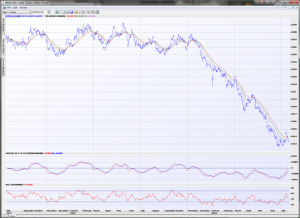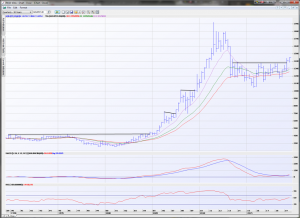I know this is the fifth time I am writing about gold but with the precious metal surging to fresh new multi-year highs I need to stress to readers the enormous opportunity that is being presented to investors.
Back in February and then again in May I wrote about Newcrest Mining (NCM) stressing this exact fact about making sure not to miss out on the forthcoming rally that is likely to be the biggest since the pre-GFC stages. NCM has appreciated over 50% this year and in an urge to have as many readers as possible I highlighted some of my other preferred gold exposures in my June 14 article including Silver Lake Resources, Medusa Minerals, Evolution Mining and Red 5. And to just ram home the point on June 28 I pushed Resolute Mining, Saracen, Northern Star and Regis in another gold bug story.
I hope you have all enjoyed some windfall profits because these have all gone truly ballistic.
So where to now?
I think we need to first highlight why these gold stocks have surged. Simple. Gold appreciating.
Now that’s abundantly clear will gold continue to rise? Most certainly. In a big way.
In my previous articles, I have attempted to explain the thematic and global trends that are and will continue to drive not only gold but silver higher. I will review these again but to start let’s just revisit the strongest thematic I have had since last year – bond yields lower. Being long bonds (lower interest rates) was my “easiest trade” of 2019 recommendation at the start of the year as a slowing global economy would sharply impact the ability of the borrowers to spend. Who are these borrowers? Everyone consumers, corporates and Governments have all taken on such significant amounts of debt that the ability to finance these loans makes us very sensitive to interest rate movements. Any slowdown in the economy and that sensitivity rises even further.

So as bond yields around the world have plummeted in line with my expectations and forecasts (as shown above), there are two outcomes. Investors are forced to find either safe assets like gold, US Treasury bonds, and other Government debt or find assets that produce a higher return like equities and specifically dividend-paying assets. Hence, my “Yield Crunch” thematic where high yielding infrastructure assets like Transurban would have to surge in price because it makes no sense that it would yield over 4% and a 3-year Government bond less than 1%. That differential is too wide. It should only be 1 -1.5%.
This all explains the big consistent surges we have seen in bonds, property trusts, gold stocks and infrastructure assets.
Technically, when looking at the long-term charts of these assets especially Gold, this trend has only just begun. There is only one chart you need to see on gold and this is it. There was only one chart you needed to see to know the housing market locally was poised to collapse and showed that in 2017.

What this chart shows is something I have stressed in recent months – gold is breaking out of a six-year base. This does not happen very often. In fact, in the past 40-years, it has only happened once before in 2005 and look at the resulting appreciation! There were a couple of continuation breakouts during that bull market but none that stretch as long as the most recent.
When rising out of base of this clarity and size, new long-lasting trends emerge. When you can see that gold reaching $2000 is a probability for 2020 and that prices have only just begun to trend higher don’t think you have missed the boat. Sure when stocks like Silver Lake have double in a couple of months it’s easy to think that. But I say think of it this way, if these gold stocks can surge like they have off just this early gold move imagine what they can do when gold is hundreds of dollars higher. I am clearly a gold bull. Don’t even get me started on what silver can do! It hasn’t even budged yet.







